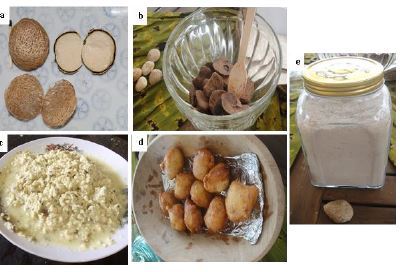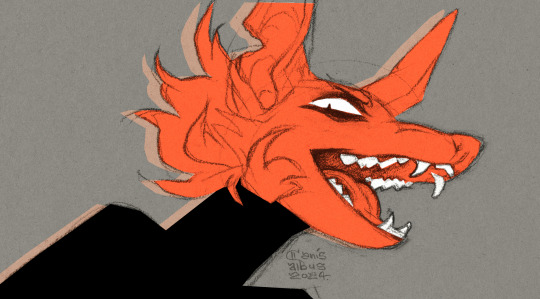#Utilization
Text
Oyster Nut: Ethnobotanical Insights from Northern Tanzania

Abstract
Telfairia pedata (Sims) Hook is an important native climber plant commonly grown in East Africa. It bears nuts which are eaten either raw or cooked and is consumed mostly by expectant mothers, and as cooking oil. The survey was conducted between September 2019 to February 2020 in Sambaa, Meru, and Pare communities of Lushoto, Bumbuli, Arumeru and Same Districts, Northern Tanzania to assess the ethnobotany of T. pedata from a sample of 346 respondents using semi-structured questionnaires. Results indicate that, 21% of respondents used T. pedata for cooking with other staple foods while 18% claimed that the nuts are used by pregnant and lactating mothers for medicinal and breast milk stimulation and nine (9) percent indicated that the nuts are used for cultural and ritual purposes. Despite its importance, the cultivation of T. pedata in the study area is declining and the gap why such decline is experienced needs to be answered in further studies. Secondly, respondents within the 36-50 age groups reported the greatest diversity of uses of T. pedata 51% compared with those aged below 36 years old 21% signifying that the traditional knowledge known by younger aged groups may be declining. Thus, this gap of traditional knowledge between the groups should be addressed in order to improve utilization and conservation of this seriously declining yet important nut in the study area and other places of Tanzania.

Introduction
Local societies are known to have ethnobotany knowledge that is inherited from one generation to another through word of mouth on economic, medical, ecological and cultural benefits (Hamilton, 2003) (Young, 2007) (Tamalene et al., 2016). Ethnobotany assists in explaining utilization and preservation of the plants biodiversity thus maintaining local ecological systems and culture (Reid et al., 2009).
Telfairia pedata (Smiths ex Sim) Hook (Fig. 1), is Cucurbitaceae family from a small genus of flowering plant which is native in Tanzania including Zanzibar Island and other countries of Africa including Uganda and northern Mozambique (I. A. Ajayi et al., 2004)(Aregheore, 2012). It is also well known by its local names in regions of Kilimanjaro, Arusha, Tanga and Ruvuma as "mkweme", "ngoimee" or "ikwemee" and "makunguu", “nhahani” and so forth. It is a woody dioecious climber with coiled tendrils which bears squash like fruits containing nutritious oil seeds and grows well in well drained loamy soils (Van der Vossen & Mkamilo, 2007), Fig. 1. The plant is a facultative perennial which is grown in slightly shaded and mulched areas but not damp soils and also creeps on host trees, live hedges or staked on wooden framework (Ajibade et al., 2006; Grubben, 2008; Paul & Yavitt, 2011). T. pedata nuts are rich in oil content, fat, protein, polyunsaturated fatty acids, monounsaturated fatty acids, minerals including magnesium, phosphorous (Akoroda, 1990b; Mwakasege et al., 2021).

In Tanzania, ethnobotanical facets and uses of T. pedata have not yet been adequately documented specially in terms of local people’s livelihoods, how it used, cultivated, marketed, preserved and its conservation measures. Among local plants long used by the Pare, Chagga, Sambaa, and Meru tribes, the T. pedata is one which is harvested from the home gardens and agroforestry systems (trees mixed with annual crops) as a source of food, for cultural rituals and medicine. In these communities, traditional knowledge about T. pedata has been passed down and applied for generations (Ajayi et al., 2004; Odiaka et al., 2008).
Therefore, this study aims at documenting and collating knowledge on the indigenous uses of T. pedata nuts and its cultivation practices in order to support the consumption and utilization of the plant in a sustainable manner, while providing benefits to the local communities through conservation of traditional knowledge. We examined the ethnobotany of T. pedata in northern Tanzania with the expectations that, the socio-demographic characteristic on T. pedata differ across the study sites; there were different ethnobotanical uses of T. pedata across the study area; areas where T. pedata were cultivated differ across study area with gender; perception of abundance of T. pedata differ across the study area and T. pedata nuts were stored in different methods across the sturdy area.
Source : Ethnobotany of Oyster nut (Telfairia pedata) in Northern Tanzania
3 notes
·
View notes
Text

Hey Alexa play Thug Motivation 101 by JEEZY ⛄️❄️🏂💰 🔁 💳
#debt snowball#debt#credit cards#capitol one#credit score#experian#utilization#art#generationalwealth#mansorus#building wealth#repeat
20 notes
·
View notes
Text
Power- Generation Sector was the Major User of Carbon Capture, Utilization, and Storage
The carbon capture, utilization, and storage market will power at a rate of 27.3% by the end of this decade, to touch USD 17,835.6 million by 2030.
The key factors credited for the development of the industry are the increasing emphasis on decreasing carbon emissions accompanied by government initiatives for achieving carbon neutrality by 2050, and the increasing requirement for CO2-EOR methods.

Pre-combustion technology is the market leader; though, the requirement for post combustion technology will rise significantly at a rate of, of 27.6% in the future.
This growth is because of the increasing power plant count in China and India. This technology is the most feasible for separating CO2 from exhaust gases formed by the combustion of fossil fuels for generation of power.
Power generation sector is the largest end-user, with about 40% share in the past. This is due to the fact that over 40 CCUS power generation projects are currently developed globally, with most projects associated with coal-fired and gas-fired power.
Though, the oil & gas sector will grow the fastest in the years to come, as carbon capture, use, and storage have brought about numerous prospects for example improved oil & gas recovery from declining gas formations, oil & gas refining, ethanol production, low carbon hydrogen generation, and direct-air capture.
The carbon capture, utilization, and storage market of North America had over 35% share and this will continue in the years to come as well as well. This is because of the growing requirement for products and fuels with a lower carbon dioxide footprint and the increasing integration of CCUS projects with planned liquified natural gas projects.
Also, private and public organizations are investing in the growth and commercialization of technologies capturing carbon from flue gas streams, which is supporting the development of the industry.
APAC will grow the fastest in the years to come. This has a lot to do with the presence of many new projects emerging in developing nations, where there are high emissions.
Furthermore, the region has appropriate geology for carbon sequestration, adding advantages for corporations to set up their projects in the region.
China targets to attain carbon neutrality before 2060, and the policies are being framed by the government, resulting in the setup of CCUS plants in the nation.
For example, in 2021, China had about 6% of the novel project developments. Likewise, the MEE announced its support for CCUS pilot and demonstration projects in free trade zones in 2021, in May.
The governments of various nations are trying to achieve carbon neutrality and this calls for an increase in demand for carbon capture, utilization, and storage. This will continue in the years to come as well.
0 notes
Text
tim: sweet dog you got there.
gordon: yes, this is our new drug-sniffing dog.
tim: still training huh?
gordon: red robin.. what do you mean?
tim: ...
tim: nevermind...
#he has a blunt in his utility belt he plans to share with spoiler later#and a cart#and perhaps a guava ice lost mary that he hits whenever bruce isnt looking - its like a game#stoner tim drake my beloved#dc#tim drake#james gordon#robin#red robin#batman#batfam#bruce wayne#spoiler#stephanie brown#incorrect quote generator
9K notes
·
View notes
Text
i will never understand why more people in their 80s don't commit felonies. you reach that age and surely there's something illegal you always wanted to do but didn't bc Consequences
dammit, GO FORTH GRANNIES!!! rob an armored car! hold up that bank! tunnel your way into fort knox! what are they gonna do, sentence you to 20 years? good fuckin luck with that
#mine would be a coordinated museum heist utilizing the lifetimes of experience and diverse expertise of my fellow nursing home residents#also there's Karl the orderly. his skill is he drives the shuttle van#technically he shouldn't be enabling us but he thinks it's a good enrichment activity#heck debra hasn't been this excited since her son flew in from australia.#plus Karl figures formulating an elaborate heist is better brain exercise than the puzzle books they keep in the resident lounge#all the sudokus are half finished anyway#update: upon consideration my second choice is just. MASSIVE credit card fraud.
17K notes
·
View notes
Text
#callie.txt.exe#robotgirl#polls#(pointing a gun at you) do you want the utility or do you want the fun
7K notes
·
View notes
Text
Carbon Capture, utilization, and storage (CCUS) is an emission reduction process, which is intended to prevent large amounts of carbon dioxide from being released into the environment. The technology involves the collection, transportation, and injection of carbon dioxide so that it does not escape into the atmosphere.
0 notes
Text


barracuda face
#midnight doodles#own art#own characters#CanisAlbus#art#artists on tumblr#Machete#anthro#sighthound#dogs#canine#animals#sketches#wip#long snouts enable really wide grins and I feel like I haven't been utilizing them enough lately
7K notes
·
View notes
Photo

I hate AFO's quirk utilization so much it's unreal. , Meme by Weeblmao.com
#AFOs#BNHAMemes#BokuNoHeroAcademia#BokuNoHeroAcademiaMeme#BokuNoHeroAcademiaMemes#hate#MHAMeme#MyHeroAcademia#MyHeroAcademiaMeme#MyHeroAcademiaMemes#quirk#unreal#utilization
0 notes
Text
The extraction and utilization of shale oil have been the subject of intense political debate, making it a controversial topic. This unconventional oil has been utilized since the early 14th century and has gained popularity due to the ever-increasing demand for energy coupled with the advent of advanced technology. In this post, we shall delve into the pros and cons of shale oil.
0 notes
Text
I'm re-reading the Discworld series for reasons, and honestly the most relatable part of reading these as an adult is how many of the protagonists start out being tired, used to their little routine and vaguely disgruntled by the interruption of the Plot. Sam Vimes wants to lie drunk in a gutter and absolutely doesn't want to be arresting dragons. Rincewind is yanked into every situation he's ever encountered, though he'd much rather be lying in a gutter too. (Minus the alcohol. Plus regretting everything he's ever done said witnessed or even heard about fourth-hand in his whole life.) Granny Weatherwax is deeply suspicious of foreign parts and that includes the next town over; Nanny has leaned into the armor of "nothing ever happens to jolly grannies who terrorize their daughters-in-law and make Saucy Jokes"
Only the young people don't seem to have picked up on this---and that's fortunate, because someone has to run around making things happen, if only so Vimes and Granny and Rincewind have a reason to get up (complaining bitterly the whole time) and put it all to rights. Without Carrot, Margrat, Eric, etc. these characters don't have that reason; they're likely to stay in the metaphorical gutter and keep wondering where it all went wrong or why anything has to change.
............well, that's not quite true. You get the sense that Vetinari knows how much certain people hate the Plot. And as the person sitting behind the metaphorical lighting board of Ankh-Morpork, he takes no small pleasure in forcing the Plot-haters specifically to stand up, and say some lines.
#I finished guards guards just yesterday and I forgot that vimes and wonse were set up to be mirror images#both boys from the shades of very different natures; who made good (ish) in wildly different ways#also it's interesting reading this books from an adult perspective; my mind isn't blown that these books exist#anymore; plus I've read so many good books since#and they're not perfectly constructed novels! especially these early books;#there are plenty of spots where I can feel the narrative get thin; where there's more handwaving than I remember#but each book IS better and tighter; the jokes are funnier and the irony sharpens; the footnotes are better utilized#the characters are getting more interesting and complicated as opposed to set-ups for jokes.#it's an illustration of someone getting better at their chosen field and that in itself is more impressive than I was anticipating.#discworld
3K notes
·
View notes
Link
1 note
·
View note
Text
Dick in Gotham handling a hostage situation at a local university. Some villain crashed a party in the student apartments and has the whole building locked down. Dick is in there with Damian, and they finally make it to the floor where the bad guy is and they’re having this big tense stand off before the final fight…
and then one of the college students who this guy had huddled in the corner grabs a chair and just fucking clocks this guy. He hits him over the head so hard that the chair breaks and the guy COLLAPSES. Dick is like . Oh??
And then the student turns around (with a truly unhinged glint in his eye) and Dick recognizes him and realizes OH . Oh this is Tim’s boyfriend. That’s the crazy guy who recruited us to go beat up cultists with him. Yeah we didn’t even need to come he had that handled actually
#nobody utilizes feral bf Bernard Dowd enough#you don’t get it he’s got enough pent up rage and he’s crazy enough to use it#batfamily#dc comics#tim drake#bernard dowd#timbern#timber#tim drake: robin#dick grayson
3K notes
·
View notes
Text


I’m sick and miserable so it’s time to read all the baby batkids with their batdad I can get my hands on
#my art#batman#bruce wayne#yes Bruce has a Fanny pack it’s his dad utility belt for sunscreen and snacks#dick grayson#Robin#cassandra cain#batgirl#black bat#young Dick Grayson#young Cassandra Cain#batfam#batfamily#cass cain
6K notes
·
View notes

